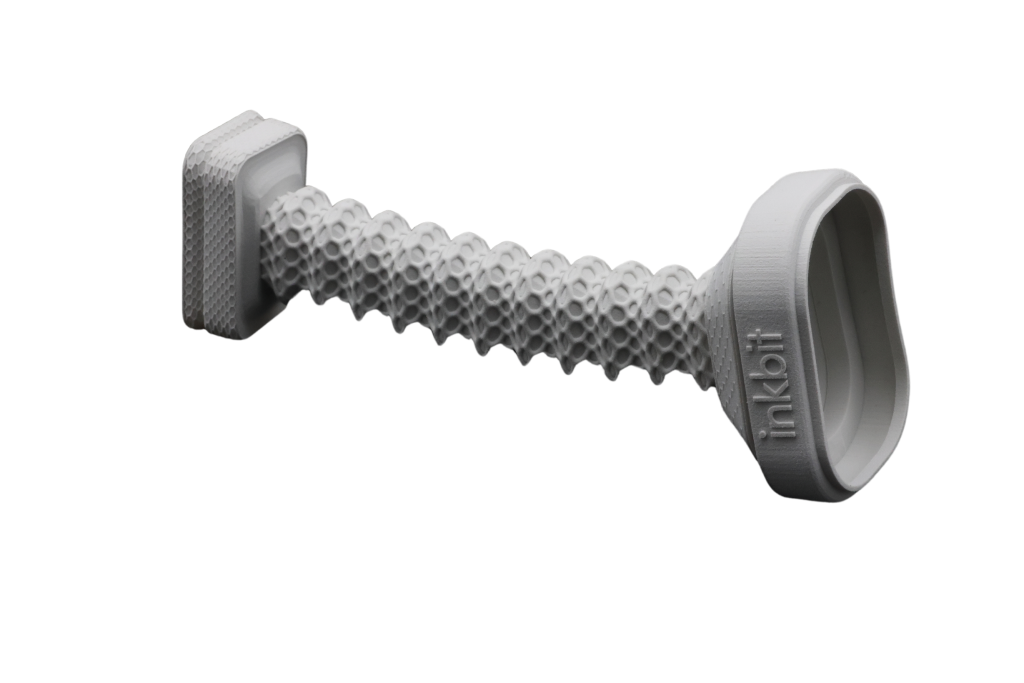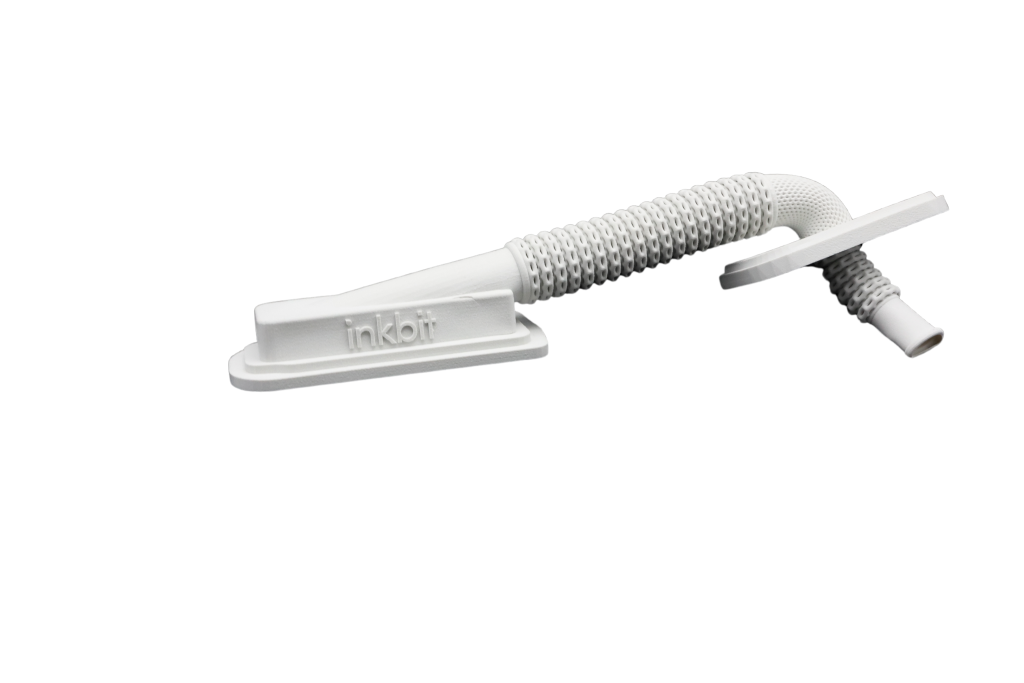Inkbit has made a significant stride in the additive manufacturing arena with the unveiling of its TEPU 50A elastomer at Formnext 2023. This new material is a thiol-ene polyurethane-based elastomer characterized by its Shore 50A durometer—a measure of the material’s hardness—and is designed to meet the precision needs of intricate components with a low compression set, superior UV stability, and robust chemical compatibility.
Read all the 3D Printing Industry coverage from Formnext 2023.
“TEPU 50A is our answer to the market’s call for a versatile, mid-range hardness elastomer that doesn’t compromise on detail or durability,” an Inkbit spokesperson stated. The TEPU 50A stands out for its excellent surface finish and elasticity, making it highly suitable for detailed geometries that are resilient yet elastic.

Following its predecessor, TEPU 30A, the new TEPU 50A complements Inkbit’s growing Vista™ ecosystem, offering a tailored solution for applications that necessitate a medium-soft material with optimal sealing and compression characteristics. It presents a compelling alternative for the prototyping or replacement of soft rubber parts, silicones, and molded TPUs where precision and fine features are critical. The potential uses span across a diverse set of applications such as grommets, window and door seals, soft grippers, and gaskets, highlighting its adaptability in creating soft elastic components for demanding uses.
TEPU 50A is specifically engineered to surpass the limitations of traditional molded or cast silicones and rubbers, offering an advanced solution for manufacturers in the automotive and various industrial sectors.
Vote now in the 2023 3D Printing Industry Awards.
Inkbit Co-Founder and CEO Davide Marini emphasizes the significance of this development, “TEPU 50A is the culmination of years of chemistry and process development driven by customers searching for an alternative to molded or cast silicones and rubbers for prototyping and beyond.” The thiol-ene polyurethane-based chemistry is at the heart of TEPU 50A’s innovation, enabling the production of soft yet resilient elastomers that are not only UV stable but also boast excellent chemical compatibility.
TEPU 50A represents a substantial improvement over existing 3D printed elastomers, which are often hindered by high viscosity, prone to chemistry limitations, and present numerous printing challenges—resulting in parts that degrade under UV exposure. Inkbit addresses these issues head-on with its proprietary Vision Control Jetting (VCJ) technology and a closed-loop feedback system that ensures consistent, high-quality printing.

The elastomer’s remarkable performance characteristics are tailored to meet the demands of applications that require flexibility, effective sealing, and superior surface quality. Technical specifications for TEPU 50A highlight its competitive edge:
– A low compression strength set of 7.7% at 23°C over 72 hours.
– A Shore Hardness of 49A, placing it in the medium-soft category.
– An impressive elongation at break of 128%, indicating high flexibility.
– A glass transition temperature (DSC-Tg) of -28°C, contributing to its cold resistance.
– Minimal degradation in performance, with only a 9.4% change in elongation at break after 1000 hours of UV aging.
– Exceptional resistance to industrial chemicals, evidenced by a mere 0.3% weight gain after being submerged in engine oil for five days.
These specifications not only assure longevity and performance but also ensure that TEPU 50A parts can withstand rigorous industrial use, embodying the advancements and potential of additive manufacturing technologies.
What does the future of 3D printing for the next ten years hold?
What engineering challenges will need to be tackled in the additive manufacturing sector in the coming decade?
To stay up to date with the latest 3D printing news, don’t forget to subscribe to the 3D Printing Industry newsletter or follow us on Twitter, or like our page on Facebook.
While you’re here, why not subscribe to our Youtube channel? Featuring discussion, debriefs, video shorts, and webinar replays.
Are you looking for a job in the additive manufacturing industry? Visit 3D Printing Jobs for a selection of roles in the industry.
Featured image shows TEPU 50A Valve Cap. Photo via Inkbit.



